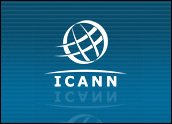
The superstar movie rental giant Netflix rapidly graduated to movie streaming and suddenly splintered off its old-fashioned DVD-by-mail service to create “Qwikster,” a separate division with a name identity inspired by the likes of “Twitter” and “Napster,” etc.
When the outcry of customers reached the boardroom, the objections over account access, dual billings and having to deal with two separate unrelated name identities overwhelmed the management, and the wisdom kicked in.
Qwikster was quickly withdrawn.
“It is clear that for many of our members two websites would make things more difficult, so we are going to keep Netflix as one place to go for streaming and DVDs,” Netflix CEO Reed Hastings said in his blog. “This means no change: one website, one account, one password.”
In other words, no Qwikster.
This is a good move indeed, as Qwikster would have become a major name identity liability and a branding nightmare. Creating divisional identities, spinoffs of operations and divestures all require a very delicate understanding of corporate nomenclature.
It’s very easy to find the names quickly, but to disrupt perceptions and influence the human nature side of “name usability” is very complex. Here is one major new emerging front that will topple traditional thinking on market domination via name identities.
Understanding the Difference Between a Pyramid and a Root
A typical domain name is a pyramid. For example, under “www.ibm.com” the entire universe of IBM is parked. The company’s history; products and services; management; global offices; investment and stock-related information; human resources; public relations; community services; staffing; and hundreds of other items are all nicely arranged like a pyramid.
There is only one www.ibm.com domain name, and it belongs to IBM. Great, so, what’s so special about it? Millions of other companies are doing the same thing. Just hold that thought for a minute.
The ICANN’s gTLD brand is a root. Say IBM acquires “.ibm,” and it selectively creates a series of subdomain-name cyberbrands: “mainframe.ibm,” “cloud.ibm,” “delhi.ibm,” “hr.ibm,” or “shares.ibm.” The variations are endless, and for a global player, they could offer geo-socio-cybercontact subdomain connections all over the world.
As a root, the gTLD name brand grows into a tree with branches and provides a more flexible and end-user friendly setup.
If mass customer acquisitions and outreaching cybercustomer touch are the next challenges for the ever-expanding universe of online users, then such roots play a far more advanced game then the traditional single domain name stacked up with content like a pyramid.
The management has two options: Either just keep the pyramid and keep adding to its solo structure, or start thinking about the free-flowing growth of a root into many different branches to strategically interlink or uplink and become a large tree. In either case, performance will be dramatically different.
Ignorance Breeds Fear
Naysayers all over the world are already blasting ICANN over its gTLD program, but their fears are based on a lack of understanding and readily available skills to adjust to this global shift toward large-scale cybername identity management.
The subject gets even more complex for global entities when there are too many subdivisions within too many sub-brands, each with a splintered name identity already polluting the market place — and that’s where proper rules have be applied to harmonize corporate nomenclature.
What would have happened if the gTLD “.netflix” existed? Would “stream.netflix” and “dvd.netflix” have provided highly unified single brand name equity, with the same back end? Similarly, with its own root domain, Netflix could offer country-specific identities like “canada.netflix” — and just keep adding targeted countries. The company’s execs are smart, and they will decide the right thing.
Today, serious marketers have to come to grips with new ideas and selectively abandon the elements of their traditional education that are no longer relevant in favor of mastering the new emerging platforms. The next battle is all about mass customer acquisition and mass customer touchpoints achieved by practicing market domination via name identity.
At this level of complexity, this topic is not discussed at universities or in MBA programs anywhere in the world — and for this reason alone, there is unwarranted confusion and fear about the new platforms.
ICANN will be accepting gTLD brand applications starting Jan. 12, 2012.










































Social Media
See all Social Media